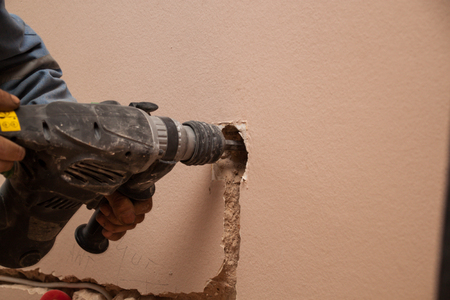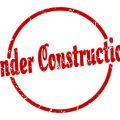Understanding Damp Issues in UK Homes
Damp is a common concern for homeowners across the United Kingdom, largely due to the country’s unique climate and traditional building methods. The persistent rainfall, cool temperatures, and historic architecture found throughout Britain create an environment where damp problems can flourish. Before exploring effective DIY damp proofing solutions, it is crucial to identify the specific type of damp affecting your property. Each type has distinct causes and requires tailored approaches for successful treatment.
| Type of Damp | Common Causes | Typical Symptoms |
|---|---|---|
| Rising Damp | Moisture from the ground moving up through walls due to failed or missing damp-proof courses (DPC) | Tide marks on walls, peeling paint or wallpaper, salt deposits at the base of walls |
| Penetrating Damp | Water ingress from external sources such as faulty gutters, roof leaks, or cracks in masonry | Damp patches on walls and ceilings, localised mould growth, deterioration of plaster |
| Condensation | Poor ventilation combined with high indoor humidity levels—often exacerbated by modern airtight windows and insulation | Water droplets on windows and walls, black mould growth, musty odours |
The interplay between UK weather patterns and typical British property construction—such as solid brick walls without cavity insulation—means that damp issues are both varied and widespread. For instance, older Victorian terraces often lack adequate damp-proof courses, making them especially vulnerable to rising damp. Meanwhile, properties with insufficient ventilation are prone to condensation during colder months when heating systems are frequently used and windows remain closed. Understanding these fundamentals is key before embarking on any DIY damp proofing project to ensure you select the most appropriate solution for your home’s specific needs.
2. Essential Tools and Materials for DIY Damp Proofing
If you’re planning to tackle damp proofing yourself, having the right tools and materials is crucial for achieving professional results that will stand up to the unpredictable UK climate. Most of these essentials are readily available from well-known British hardware stores like B&Q or Wickes, ensuring you can source everything locally and reliably.
Must-Have Tools for Damp Proofing
| Tool | Purpose | Recommended Brands/Features |
|---|---|---|
| SDS Drill & Masonry Bits | Drilling holes for injection creams or membrane fixings | Makita, DeWalt – ensure compatibility with masonry bits |
| PPE (Gloves, Goggles, Mask) | Personal safety during chemical application | Look for CE-marked products suitable for chemical handling |
| Trowel & Hawk | Applying render or waterproof plaster | Stainless steel trowels resist corrosion in damp conditions |
| Caulking Gun | Applying sealants neatly and efficiently | Compatible with UK standard cartridges |
| Spirit Level & Tape Measure | Ensuring membranes and treatments are properly aligned | Stanley, Draper – robust construction preferred |
Essential Materials for Damp Proofing in the UK
| Material | Description & Application Tips |
|---|---|
| Damp Proof Membrane (DPM) | Select a high-gauge plastic membrane designed for British homes—look for BBA-certified options suitable for floors or walls. Rolls are typically available at B&Q or Wickes. |
| Damp Proof Course (DPC) Creams or Liquids | Chemical DPCs like Stormdry or Dryzone are effective for brickwork. Choose products tested for the UK’s moisture levels and follow manufacturer’s application guidelines strictly. |
| Mould Resistant Sealant | A must-have for sealing around windows, door frames, and skirting boards. Opt for flexible, anti-mould silicone sealants by Unibond or Everbuild. |
| Waterproof Plaster or Render Additive | Add to plaster mixes to provide extra water resistance—especially vital in older British properties prone to rising damp. |
Selecting Products Suited to UK Conditions
The UKs variable weather means it’s essential to pick products formulated specifically for local climates—always check packaging for suitability against rain penetration, frost resistance, and breathability. Don’t hesitate to consult with store staff at B&Q or Wickes about your property type (Victorian terrace, 1930s semi, etc.) as some solutions work better with particular construction methods common in the UK.

3. Step-by-Step Guide to Spotting and Diagnosing Damp
Effective DIY damp proofing in the UK starts with a meticulous inspection of your property, tailored to common British building types such as Victorian terraces, Edwardian semis, or 1930s houses. Here’s a practical approach for homeowners who want actionable results:
Visual Checks: What to Look Out For
Begin your inspection by walking through each room, paying close attention to areas prone to moisture ingress. Use natural daylight where possible, and don’t overlook hidden spots behind furniture or beneath windowsills.
| Key Area | What to Check | Common UK Indicators |
|---|---|---|
| Walls (internal & external) | Look for peeling paint, blistering wallpaper, tide marks, or white salt deposits (efflorescence) | Victorian brickwork often shows salts and blown plaster; cavity walls in 1930s homes may show damp patches |
| Floors | Check for musty odours, coldness underfoot, or warping floorboards | Suspended timber floors in older terraces can harbour sub-floor damp |
| Windows & Doors | Mould on frames, condensation build-up, rotting sills | Single-glazed sash windows are especially vulnerable in period properties |
| Ceilings & Rooflines | Staining, sagging plaster, dark patches near chimneys or roof edges | Pitched slate roofs on Edwardian semis may develop leaks at flashing points |
Using Moisture Meters for Accurate Diagnosis
A digital moisture meter is a valuable tool for any DIYer seeking precision. To ensure compliance with UK standards:
- Select the right setting: Use the “masonry” or “timber” setting depending on the surface.
- Probe suspected areas: Test skirting boards, lower wall corners, and window reveals.
- Interpret readings: Readings above 20% WME (wood moisture equivalent) generally indicate active dampness in timber; over 1% in masonry signals concern.
- Record results systematically: Create a simple log with locations and corresponding values for future reference and insurance purposes.
Assessing Structural Vulnerabilities Unique to UK Properties
Certain architectural features present specific risks. For example:
- No DPC (Damp Proof Course): Many Victorian homes were built without modern DPCs—look for continuous damp at the base of ground floor walls.
- Poor ventilation: Traditional sash windows and blocked chimney breasts often result in inadequate airflow—check for black mould in corners and behind wardrobes.
- Poor guttering/roof drainage: External inspection should include gutters, downpipes, and pointing—overflow or blockages lead directly to penetrating damp inside.
The Takeaway: A Methodical Approach Pays Off
A combination of visual assessment and objective measurement is key. By logging findings systematically and understanding property-specific vulnerabilities common in the UK, you’ll be well-positioned to select the most effective DIY damp proofing solution in the next steps.
Effective DIY Damp Proofing Techniques
Addressing damp issues in UK homes requires a practical, informed approach. Below, we detail proven DIY damp proofing techniques widely accepted across the UK, including step-by-step instructions and essential tips to help homeowners achieve lasting results.
Chemical Damp Proof Course Application
One of the most popular solutions for rising damp is installing a chemical damp proof course (DPC). This method involves injecting a silicone-based cream or liquid into pre-drilled holes at the base of affected walls, creating a waterproof barrier.
Step-by-Step Guide
| Step | Instructions | Insider Tip |
|---|---|---|
| 1. Preparation | Clear any skirting boards and plaster up to 1 metre above the visible damp line. Allow the wall to dry. | Use a moisture meter to identify all affected areas before starting. |
| 2. Drilling | Drill holes at regular intervals (typically 10-12cm apart) along the mortar joint, about 150mm above ground level. | Avoid drilling too deep; follow the manufacturer’s guidelines for hole depth. |
| 3. Injection | Inject the DPC cream or liquid into each hole using an applicator gun or cartridge. | Wear gloves and ensure even distribution to avoid gaps in the barrier. |
| 4. Finishing | Fill holes with mortar and allow adequate drying time before replastering or repainting. | Do not rush redecoration—premature work can trap moisture inside walls. |
Using Anti-Mould Paints
Anti-mould paints are formulated to resist fungal growth and condensation, making them ideal for high-humidity areas like bathrooms and kitchens.
Application Process
- Surface Preparation: Remove existing mould using a fungicidal wash. Ensure surfaces are dry and free from loose debris.
- Priming: Apply a suitable primer if recommended by the paint manufacturer, particularly on porous surfaces.
- Paint Application: Use two coats of anti-mould paint with adequate drying time between coats. Follow product-specific instructions for optimal protection.
- Avoid Common Pitfalls: Do not paint over active mould; always treat it first to prevent recurrence.
Improving Ventilation
Poor ventilation is a leading cause of condensation damp. Enhancing airflow can dramatically reduce moisture build-up indoors.
UK-Approved Ventilation Solutions
| Method | Description | Cultural Consideration |
|---|---|---|
| Trickle Vents Installation | Add trickle vents to window frames for continuous airflow without compromising security. | A popular choice in modern UK homes due to minimal heat loss. |
| Extractor Fans Upgrade | Install or upgrade extractor fans in kitchens and bathrooms, ideally with humidity sensors for automatic operation. | An effective way to combat steam and cooking-related moisture common in British households. |
| Lifestyle Adjustments | Avoid drying clothes indoors; keep furniture away from external walls to allow air circulation. | This simple habit change is widely recommended by UK property professionals. |
Avoiding Common Mistakes
Avoid blocking air bricks or covering ventilation points, as this can exacerbate damp problems. Always consult product instructions and, when in doubt, seek advice from UK-accredited suppliers or local authorities for compliance with Building Regulations.
5. Meeting Legal Requirements and Ensuring Compliance
When undertaking DIY damp proofing in the UK, it’s crucial to understand the legal landscape to avoid costly mistakes or future disputes. Both homeowners and landlords have statutory obligations regarding property maintenance and safety, particularly when it comes to issues like rising damp or condensation. Below is a summary of key legal considerations that must be addressed before commencing any DIY work:
Key Legal Considerations for Damp Proofing in the UK
| Aspect | Homeowner Responsibilities | Landlord Responsibilities |
|---|---|---|
| Building Regulations | Must ensure all damp proofing works comply with current Building Regulations (e.g., Part C: Site Preparation and Resistance to Contaminants and Moisture). | Equally required to ensure works meet all relevant Building Regulations for tenant safety. |
| Health & Safety | Obligation to maintain a safe living environment, especially if selling or renting the property in future. | Legally required to provide a habitable dwelling free from excess moisture under the Homes (Fitness for Human Habitation) Act 2018. |
| Planning Permission | Generally not required for internal damp proofing, but external changes (like rendering) may need local authority approval. | Same as homeowner; must also inform tenants of major works. |
| Professional Certification | If major structural alterations are needed, certified professionals must be involved for compliance certificates and warranties. | Required for insurance, mortgage purposes, and meeting letting standards. |
When Should You Consult a Professional?
While many minor damp proofing tasks can be tackled DIY, there are circumstances when professional intervention is non-negotiable:
- Structural Issues: If you suspect the cause of damp is related to serious structural faults or widespread water ingress.
- Mould Risks: When black mould or persistent condensation affects health or breaches housing standards.
- Legal Compliance: For works requiring certification or where evidence of compliance may be requested by insurers or local authorities.
- Property Sale or Letting: To ensure you have valid documentation for buyers or tenants, particularly in leasehold flats where freeholder consent is needed.
Final Word on Compliance
Damp proofing may seem straightforward, but failing to observe UK regulations can lead to enforcement action, invalidate insurance, or result in costly remedial works. Always check the latest guidance from your Local Authority Building Control (LABC), consult a Chartered Surveyor if in doubt, and remember that a little legal diligence at the outset pays dividends in property value and peace of mind.
6. Maintenance, Monitoring, and When to Call a Specialist
Successfully implementing DIY damp proofing solutions in your UK home is only part of the journey; ongoing maintenance and vigilant monitoring are crucial to ensure long-term effectiveness. Below, we provide practical advice on routine checks, highlight clear warning signs that indicate it’s time to consult a professional, and offer guidance on sourcing reputable British damp specialists.
Routine Maintenance and Monitoring
Regular inspections help you spot early issues before they escalate into costly repairs. Here’s a simple schedule for keeping your property in check:
| Task | Frequency | What to Look For |
|---|---|---|
| Visual Wall Inspection | Every 3 months | Patches of discolouration, peeling paint, or bubbling wallpaper |
| Ventilation Check | Monthly | Blocked vents, condensation build-up on windows |
| Gutter & Downpipe Clearing | Twice a year (Spring/Autumn) | Debris build-up, leaks or overflows during rainfall |
| Damp Meter Testing | Biannually | Readings above normal moisture levels (typically above 20%) |
Recognising When Professional Help Is Needed
No matter how diligent your maintenance routine is, certain issues require expert intervention. Recognisable signs that it’s time to call in a British damp specialist include:
- Persistent or worsening musty odours despite cleaning and ventilation efforts
- Mould growth reappearing after repeated removal attempts
- Crumbling plaster or mortar on internal/external walls
- Extensive salt deposits (efflorescence) reoccurring even after treatment
- Damp patches spreading rapidly or appearing in multiple rooms
- Sustained high readings from a damp meter despite remedial action
Finding Trusted Damp Specialists in the UK
If you determine professional help is necessary, use these resources to find credible and vetted tradespeople:
- TrustMark: A government-endorsed scheme listing reliable local specialists.
- Which? Trusted Traders: Independent reviews and recommendations for tradesmen.
- Property Care Association (PCA): The leading trade association for damp-proofing professionals in the UK.
- Seek recommendations from neighbours or local community groups—word-of-mouth remains invaluable in British home maintenance culture.
Your Proactive Approach Pays Off
Damp proofing is an ongoing commitment. By maintaining a regular inspection routine and knowing when to seek expert advice, you can protect your property investment and ensure your UK home stays dry, healthy, and structurally sound for years to come.


